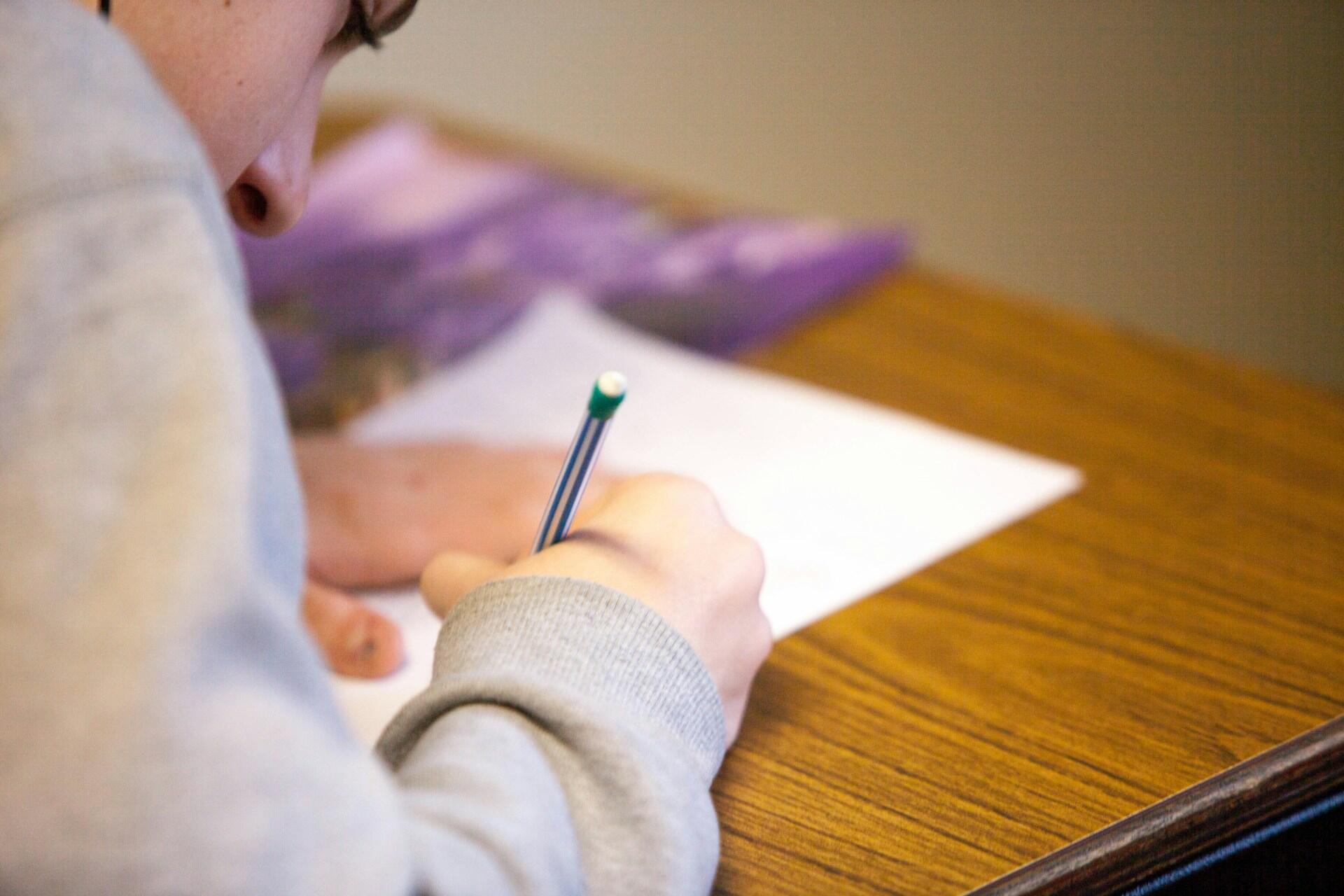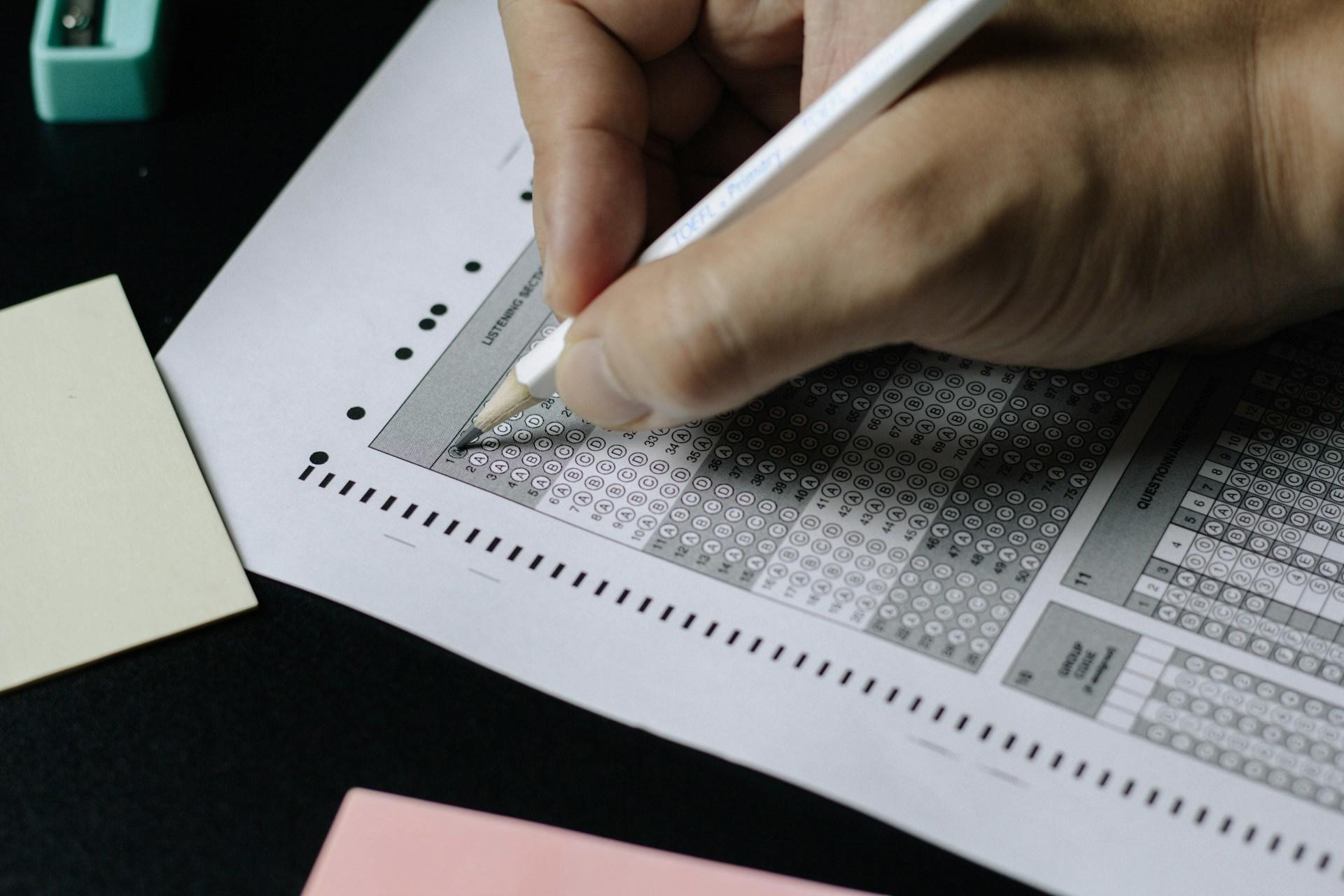The SAT is a rite of passage for the majority of college students. Historically, it’s been used as a crucial inclusion in the college admission application for most higher-education institutions located in the US. It will remain a staple in college admissions for the foreseeable future. Studying for and taking this test are two of the most important things on your to-do list as a high school student.
Key Takeaways
- The SAT is the top college entrance exam in the US
- The examination is designed to ensure students are prepared for college by knowing the most vital academic concepts
- Adaptive testing adjusts the test difficulty in Module 2

What Is the SAT?
The SAT is a standardized test administered several times per year across the entire United States, and in certain facilities abroad.
It measures college and career readiness in high school students (typically 11th and 12th graders) based on average figures collected over many years of the test’s history.
SAT scores are designed to be one benchmark measurement for:
- Students to see how well they are doing in the fundamental areas of math, reading, and writing compared to standard expectations and their peers
- Colleges and universities to consider in a student’s application
- High schools to determine if their student body is properly learning the required subjects
The name doesn’t mean anything; it used to be an acronym for “Scholastic Aptitude Test” when the test was invented back in 1926. Since then, the aim of the test changed, and “aptitude” is no longer an accurate description. However, changing the name would be too confusing since the SAT name is highly recognizable. It’s still the most-taken college entrance examination annually in the US.
Since 2024, the SAT has become the DSAT: The Digital SAT. Previously, assessments were given in the form of paper packets that required a #2 pencil to be filled out (this is probably what your parents are imagining when they talk about the assessment).
The new digital format means that assessments are now administered on a computer or tablet, which would have been absolutely unfathomable even 10 years ago.
In this guide, we’ll be talking about the current version of the SAT: the DSAT. Additionally, we will be focusing on the SAT Weekend tests, rather than the SAT School Day tests.
Note that many students who take the School Day test also take at least one Weekend test.
SAT Weekend
- Available nationwide
- The most known type of test
- Consists of two sections
- Only on weekends
- May or may not be located at your school
- Offered 7-8 times per year
- Can take it all 7-8 times per year, if desired
SAT School Day
- Only available in select schools/states
- More students take this test, but it’s less commonly talked about
- Consists of 2 sections with an optional 3rd section
- Happens during the regular school day
- Take it at your school
- Offered only in October and March-April
- Can only take it once per season
The structure of both versions of the exam is virtually identical, with one notable exception, which we will cover in the next section. Therefore, the content and scoring information, study suggestions, and general advice apply to both types.
Structure and Content of the SAT Sections
The SAT famously consists of two sections, each containing a few dozen questions, most of them being multiple-choice. Previously, every student taking the SAT in a given year would receive the same test. Now, since the assessment is digital, each student may get a unique version of the exam (though the same questions will still appear on many different examinations).
Let’s explore how the new version of the SAT is structured and the content you can expect to get tested on.
The basic structure looks like this:
- Reading and Writing Section:
- Module 1: 32 minutes, 27 questions
- Module 2: 32 min., 27 questions
- Break: 10 minutes
- Math Section:
- Module 1: 35 minutes, 22 questions
- Module 2: 35 min., 22 questions
If you were taking the SAT School Day with Essay portion, it would likely be held between the Reading and Writing and Math sections, and it is 50 minutes long, consisting of one text passage and a writing prompt.
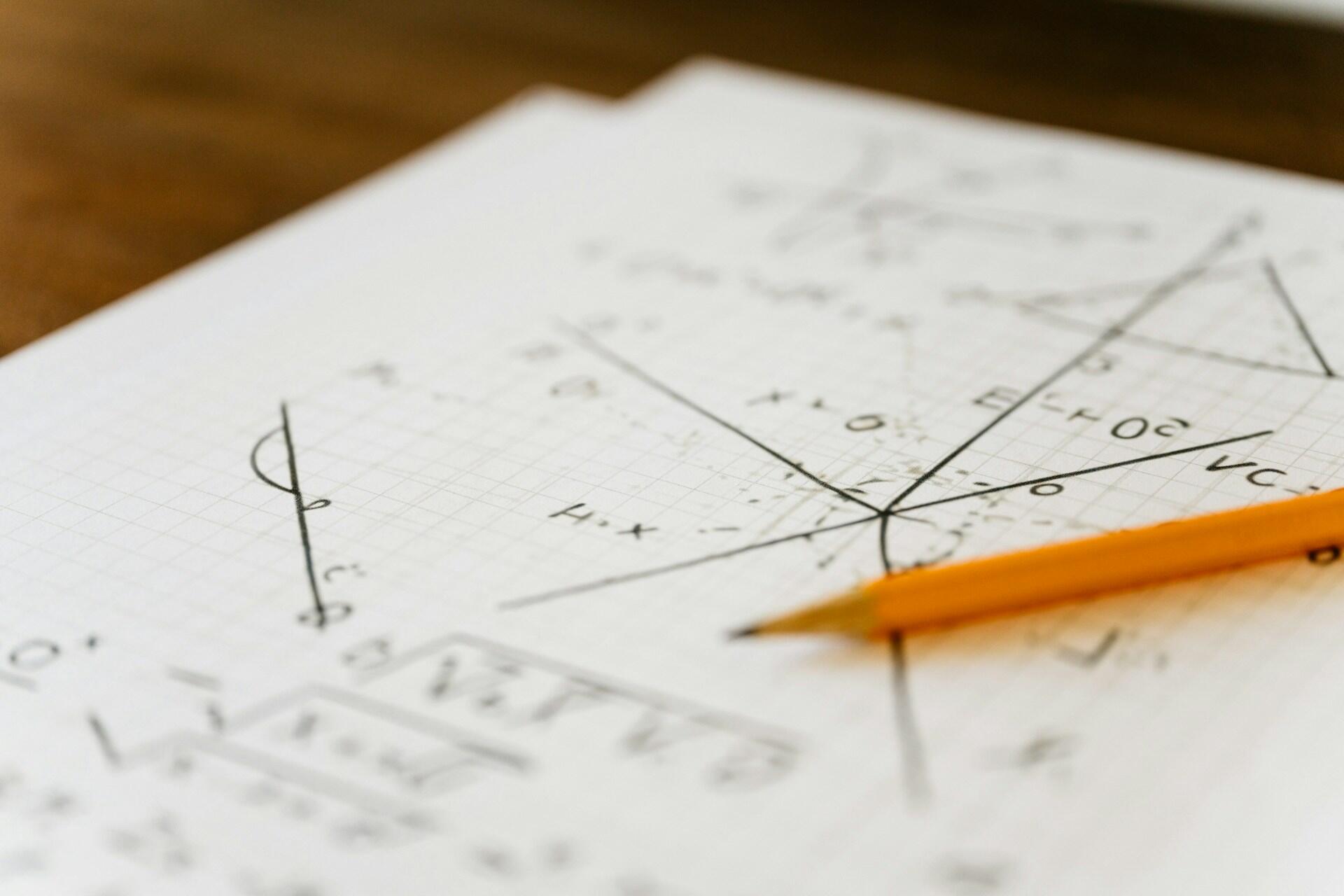
How the DSAT Adaptive Modules Work
One big new change to know is that each section is now broken up into two modules.
Module 1 is more or less the same for each student, featuring a mixture of easy, medium, and hard questions.
Based on the student’s performance in Module 1, they will be directed to an easier or harder version of Module 2.
Students who are diverted to the harder Module 2 will have more medium and hard questions, and will be able to aim for the full 800 in the section (more on this later).
Test-takers who end up with the easier Module 2 will have more easy and medium questions, meaning they can’t achieve the full 800 points, but will be able to score higher than if they were given hard questions above their skill level, leaving them struggling to answer.
Reading and Writing Section
The Reading and Writing section is designed to evaluate the following criteria:
- Craft and Structure
- Reading comprehension and vocabulary.
- Information and Ideas
- Analysis skills, information integration, and interpreting graphics (like charts).
- Standard English Conventions
- Ability to use standard writing conventions.
- Expression of Ideas
- Ability to change sentences to create a new or clearer meaning.
Every question in the Reading and Writing Section is multiple choice.
Math Section
The Math section evaluates students in these areas:
- Algebra
- Linear equations and functions, using variables.
- Advanced Math
- Nonlinear equations and functions, systems of equations, equivalent expressions.
- Problem Solving and Data Analysis
- Quantitative reasoning, understanding percentages and data, and evaluating claims.
- Geometry and Trigonometry
- Area and angles.
- Student-Produced Response (SPR) Questions
- Ability to find a solution without multiple-choice answers presented.
The majority of the Math section consists of multiple-choice questions, but about 25% of the exam is made up of SPR questions.
Be sure to study with resources like practice tests to master each type of SAT question.
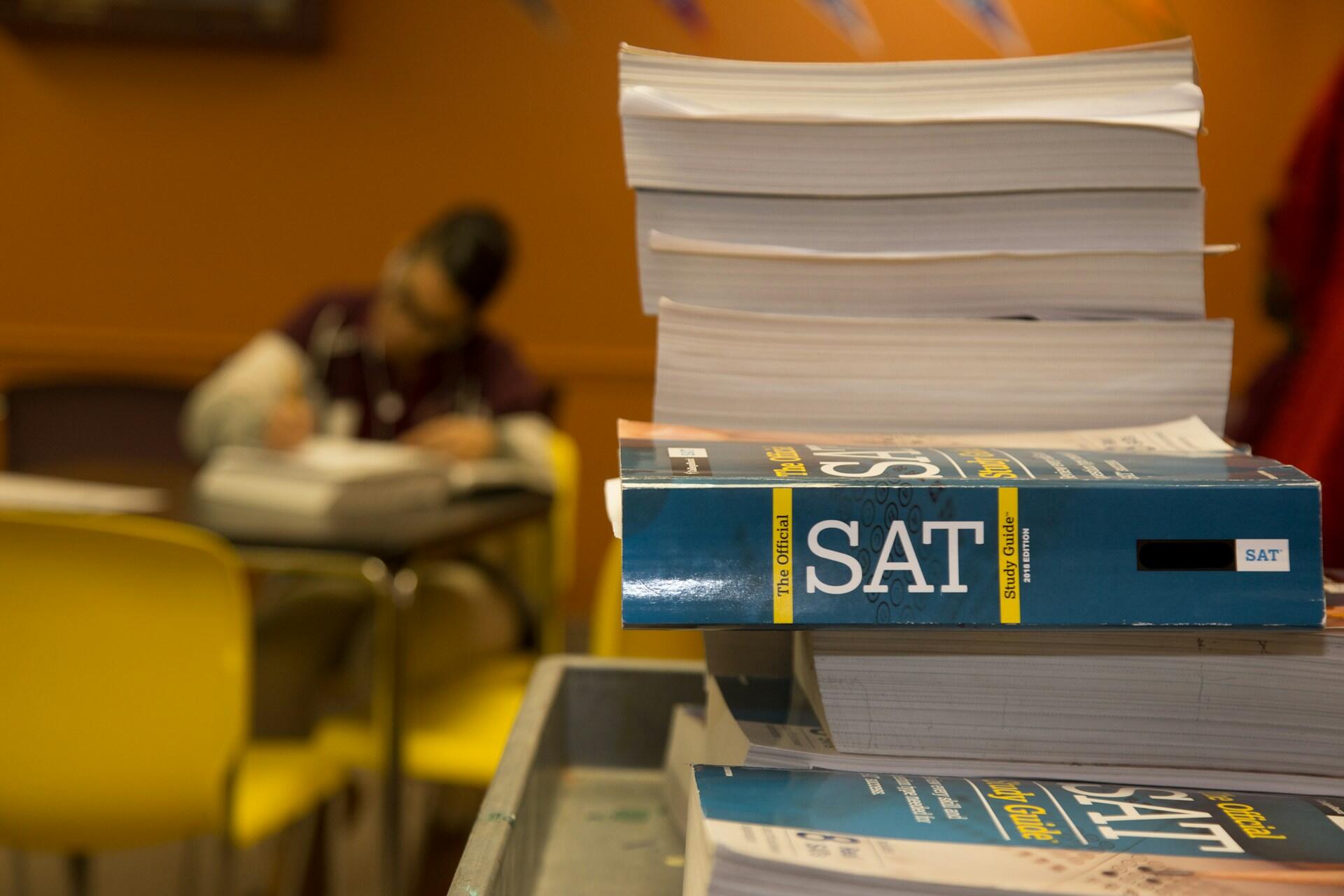
How Is the SAT Administered?
The new method for SAT administration is entirely digital (unless a student has an accommodation to receive a paper test, in which case they will also not be subject to the adaptive modules).
Students will need to download the Bluebook testing application to their approved device at least 5 days before test day and ensure that it runs smoothly on the device. Students bring the device to the examination facility, where they receive a code that allows them to check into the assessment and commence.
There is still a proctor watching over the students to ensure no unauthorized devices are used and no cheating occurs.
The Bluebook software also prevents students from opening any other applications, including an internet browser, during the test. It automatically tracks the duration and stops the examination at the exact required moment.
Make sure you arrive at the examination center before 8 AM, or you will be refused entry!

How Long Is the SAT Test?
The SAT itself (sans Essay portion) is 2 hours and 14 minutes long.
With the 10-minute break added in, the test is 2 hours and 24 minutes long.
Learn more about the ins-and-outs of SAT times in our companion article.
However, when you consider all the administrative requirements that take place before the assessment starts, plus packing up afterward, the test usually takes about 3.5-4 hours from the time the doors close (8 AM) to the time the student leaves (11:30 AM-12:00 PM).
Students with certain accessibility needs may also qualify to receive an extended examination period. The amount of extra time may depend on each student’s specific situation; you’ll need to work with the College Board to determine how much, if any, extra time you qualify for.
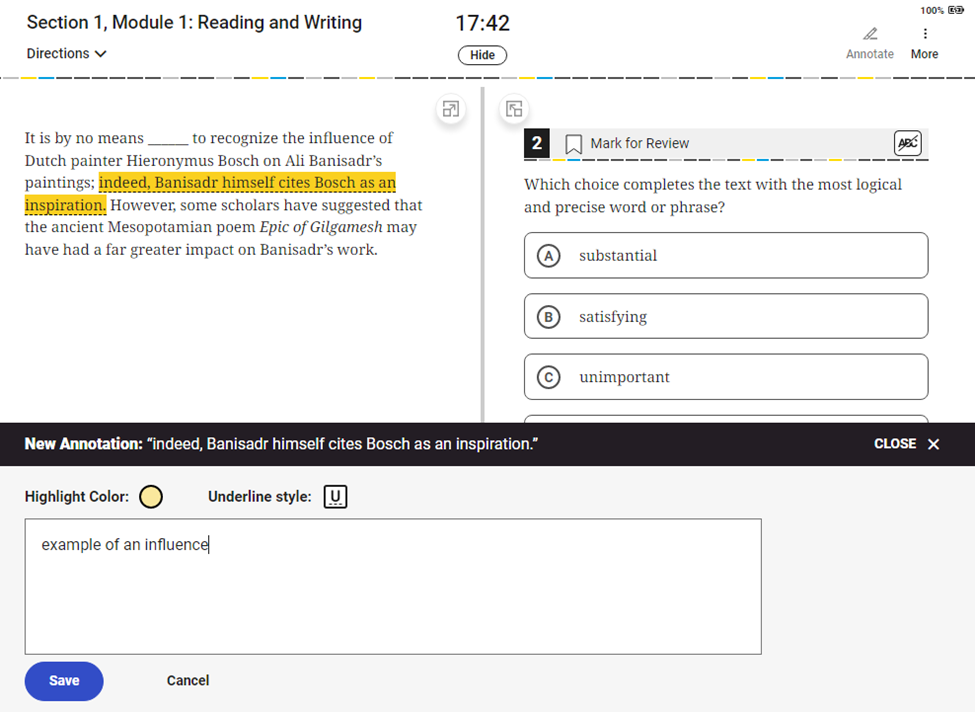
Scoring System of the SAT
The way the SAT is scored is one of its hallmark features. Everyone sounds amazing when their scores are in the hundreds or thousands! But what does it really mean?
Let’s break down the basics you need to know in order to understand your SAT scores:
Score Range
total points
The lowest possible score is 400, which would only be possible if you left every single answer blank.
A perfect SAT score is 1600.
The highest possible total in each section (again, that’s Reading and Writing, and Math) is 800.
As previously mentioned, test-takers who are diverted to the easier Module 2 in a given section will not be able to obtain an 800 in that section.
But that doesn’t mean they can’t still get a high score!
Students in the easier Mod. 2 group for Reading and Writing and Math can achieve a maximum 600-640 (estimated, since the College Board has not released the exact figures). That means the maximum score for those in the easier Mod. 2 track for both subjects is 1200-1280, which is still a very good score. Plus, if the student gets the harder Mod. 2 for one section, their highest potential score increases.
The average score is about 1050, so students scoring above this number are considered above-average.
As for the exact points you should aim for, that depends mostly on which colleges and universities you have your sights set on. Investigate to find out the average SAT score for accepted students in the previous year was to determine your target baseline.
Here are some examples:
- Princeton University: 1540-1580
- Stanford University: 1500-1570
- Harvard University: 1460-1570
- Duke University: 1490-1560
- Yale University: 1470-1560

Percentiles
Your test results page will explain, via graphics, more about your percentile rank.
Being in the 50th percentile means you scored equal to or better than 50% of all the other students who took the same SAT assessment as you. Most students hoping to attend more prestigious colleges aim for being in the 75th or 90th percentiles, depending on the exclusivity of the institution.
The test results page also shows you how you scored, in percentiles, compared to other students in your state, in the country, and in the world.
The purpose of the SAT is to give students an idea of how well they are performing in vital academic areas compared to expectations and other students. It also functions as a component in many college applications and a method for high schools to gauge how well students are learning.
Future SAT Test Dates
When you enter 11th grade, it’s best to think about taking the SAT. If you’re a go-getter, you might take it in the fall, but many also take it in the spring.
Just make sure that whenever you plan your SAT, you have time to study both the academic concepts that will be on the test, as well as test-taking techniques.
Here are the upcoming SAT dates for the remainder of 2025 as well as spring 2026.
| Date of Test | Registration Deadline | Late Registration Deadline | Scores Release Date |
|---|---|---|---|
| August 23, 2025 | August 8, 2025 | August 12, 2025 | September 5, 2025 |
| September 13, 2025 | August 29, 2025 | September 2, 2025 | September 26, 2025 |
| October 4, 2025 | September 19, 2025 | September 23, 2025 | October 17, 2025 |
| November 8, 2025 | October 24, 2025 | October 28, 2025 | November 21, 2025 |
| December 6, 2025 | November 21, 2025 | November 25, 2025 | December 19, 2025 |
| March 14, 2026 | February 27, 2026 | March 3, 2026 | TBD |
| May 2, 2026 | April 17, 2026 | April 21, 2026 | TBD |
| June 6, 2026 | May 22, 2026 | May 26, 2026 | TBD |
Even if you’re not sure yet which college you want to apply to or what you want your major to be, it’s a good idea to schedule an examination. Most students take at least 2 SAT tests, since the majority achieve more points on their second attempt in at least one section, improving their superscore.
Superscores are when you take the best score per section, even if they’re from different dates, and add them together. Many colleges will accept superscore submissions.
Register for an assessment date near you on the College Board website. Keep in mind that you may need to choose a location that is not your school for the SAT Weekend. Search different dates to find closer locations if your first date choice yields unsatisfactory results; not every test center participates in every date (or the seats may be full).
Many students, whether first-generation or not, feel totally unprepared for planning their high school classes (if they even need to), studying for and taking assessments like the SAT and ACT, and deciding which colleges and majors to apply for.
A great first step is to talk to your school’s guidance counselor and gather tools and advice. Second, use resources like the Superprof blog, Princeton Review, College Board, YouTube, and online forums to learn more about others’ experiences with deciding majors, studying for exams, and applying to colleges.
What to Bring to the SAT
One of the biggest worries for most test-takers is remembering what they should and should not bring to their examination. Here's a straightforward list of all the things you need to bring, and the things you should leave at home or in the car.
What to Bring on Test Day
Being prepared on test day is as important as proper registration, since you can be refused entry or disqualified if you don’t have the right documents or are trying to bring in banned items.
Optional items to bring:
- watch without an audible alarm
- charging cable
- bag or backpack
- drinks and snacks
- backup testing device
Your phone can be used to present your admission ticket, but after that, it must be collected by the proctor and/or stored away from all desks.
DO bring:
- Your testing device with Bluebook installed (fully charged)
- Your admission ticket (printed if possible, but on your phone is also allowed)
- Photo ID (not a photocopy or digital copy) of one of the following:
- student ID, state ID, passport, learner’s permit, or driver’s license
- notarized SAT Student ID Form (for homeschoolers under age 21)
- Pencils or pens for scratch work
- Your College Board username and password
- An approved calculator
Do NOT bring:
Smartwatches, fitness trackers, audio players or recorders, headphones or earbuds, other Bluetooth devices, notebooks, computers other than your testing and backup devices, timers, cameras, highlighters or colored pencils, books or references, math/geometry tools (like protractors or rulers), paper, earplugs, unapproved calculators, privacy screens, sharp objects, weapons, or firearms.
Now that you know more about the SAT, do you feel more prepared for registering and taking the assessment? Prepare even more by studying with a private tutor! On Superprof, you can find a qualified, effective SAT prep tutor to help you identify which topics you need more practice with. They’ll create lesson plans designed to strengthen your areas of weakness, including academic subjects and test-taking techniques.
Gain confidence and earn a great score with help from a Superprof tutor!











